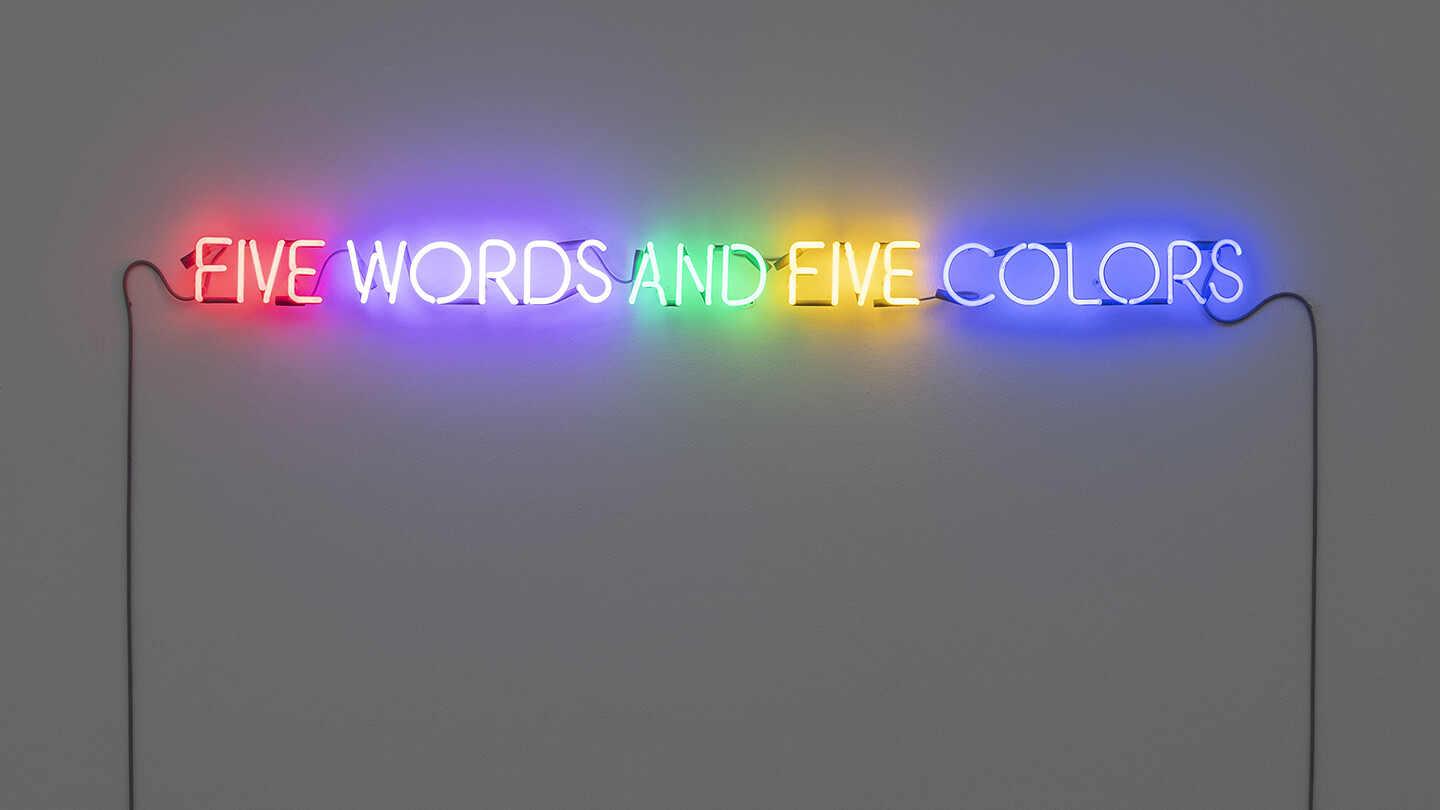
The Kunstmuseum Stuttgart will present a densely layered exhibition of works by Joseph Kosuth to commemorate the artist’s eightieth birthday year. Spanning a fifty-year history, Non autem memoria includes all works by the artist in the museum’s collection.
Art as Idea as Idea, words Joseph Kosuth (b. 1945) used in the title of an early series of works, can be read as a simple yet far-reaching and radical principle the artist established in the 1960s which determined his artistic path from that time on. Kosuth is a major representative of conceptual art not only because of the works he produced in the 1960s but also for his writings which laid the theoretical groundwork for the movement. He is also arguably one of the first artists to employ appropriation strategies, texts, photography, installations and the use of public media. Kosuth has stated that his primary concern is “with meaning, and not with shapes, colors and materials.” For him the idea involved in a work of art is of central importance, whereby words and language are the predominant means of realizing it.
Curated by the artist himself and the director of the Kunstmuseum Stuttgart, Ulrike Groos, Non autem memoria (appropriated from the latter half of a Latin phrase, “time flies, but memory does not”) provides an in-depth overview of Kosuth’s practice and investigation of meaning in art. Staged in one single room of the museum, this curated installation allows the visitor to trace the development of one of the most influential artists of the twentieth century from 1965 to the present through the Kunstmuseum Stuttgart’s substantial inventory of eighteen works by Kosuth. The exhibition includes one of Kosuth’s earliest works in neon One and Eight-A Description from 1965: it presents eight pink words in neon that collectively form a self-referential description, embodying Wittgenstein’s assertion that “what can be said at all can be said clearly.” His use of neon continues throughout his career including the most recent work in the exhibition, Texts for Nothing (Waiting for-) #3 from 2011, which is part of a body of work in which the artist used text fragments by Samuel Beckett. Kosuth’s project as an artist shares a significant concern with Beckett: both practices manifest a parallel concern with meaning.
Stuttgart was an important context for Joseph Kosuth during the 1980s and 1990s. From 1991 to 1997 he taught at the State Academy of Fine Arts as a professor. His presence in the southern German city was celebrated through numerous exhibitions and projects including a public installation work Measurement Described (A Dedication) (1994), quoting Hegel on the façade of the train station. The outstanding holdings of works by Kosuth in the Kunstmuseum Stuttgart—the largest in Germany—testify not only to his close personal links with the city, but especially to the esteem in which the artist is held.
